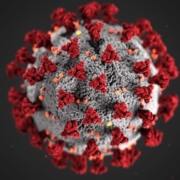EPA Proposes New Standards to Protect Public Health, Reduce Exposure to Ethylene Oxide Pollution
This original announcement was published by the EPA on April 11, 2023. Click here for more information!
WASHINGTON (April 11, 2023) – Today, the U.S. Environmental Protection Agency (EPA) is proposing new health protections to reduce exposure to Ethylene Oxide (EtO), including more stringent air emissions standards and additional protections for workers who are exposed to the gas used to sterilize medical devices and certain spices. If finalized, EPA’s proposals are estimated to cut EtO emissions to the air from commercial sterilization facilities by 80% per year and apply more protective standards to control those emissions under the law. Together, these proposals will provide a comprehensive approach to addressing EtO pollution concerns, including cancer risk, that will increase safety in communities and for workers while providing a path to maintain a robust supply chain for sterilized medical equipment.
The proposal advances President Biden’s commitment to ending cancer as we know it as part of the Cancer Moonshot and the Administration’s commitment to securing environmental justice and protecting public health, including for communities that are most exposed to toxic chemicals.
“EPA’s number one priority is protecting people’s health and safety, and we are committed to taking decisive action that’s informed by the best available science,” said EPA Administrator Michael S. Regan. “These proposals build on EPA’s extensive outreach to communities across the nation and reflects close coordination among key federal partners. Together they would significantly reduce worker and community exposure to harmful levels of ethylene oxide. EPA will continue to use every available tool to safeguard our nation’s communities, including workers, from exposure to toxic chemicals and to deliver important public health protections.”
The two new proposals announced today mark significant progress as EPA continues to leverage the full range of its regulatory authority under the law to protect public health by reducing the risk posed by EtO. Long-term exposure to EtO over the course of a 35-year career or 70-year lifetime in or near a commercial sterilizer can increase the risk of certain types of cancer. People who go to school near places where EtO is used are also potentially at an elevated risk of cancer due to EtO levels in the air. Actual risks will vary based upon a facility’s control measures for workers and community members and the distance and amount of time people live, work, or go to school near a facility.
These proposals were informed by collaboration across the federal government to deliver risk reductions while maintaining critical sterilization capabilities, including consultation between EPA, the U.S. Food and Drug Administration, the U.S. Centers for Disease Control and Prevention and Agency for Toxic Substances and Disease Registry, and the Occupational Safety and Health Administration. The proposals include controls that many facilities are already using, and that EPA would apply nationwide. The Agency has also undertaken robust public engagement on this topic and will continue to provide the public, especially in impacted communities and workplaces, with access to the information they need to make informed, independent judgements about risk and to encourage public involvement in the regulatory process.
“OSHA’s mission is to ensure safe and healthful working conditions for workers,” said Doug Parker, Assistant Secretary of Labor for Occupational Safety and Health, “We will continue our partnership with EPA and other federal agencies to reduce risks for people who work every day to maintain our nation’s vital medical device supply chain.”
Reducing Air Emissions to Protect Communities
Under EPA’s Clean Air Act authority, the Agency is issuing a proposed rule outlining new requirements for 86 commercial sterilizers across the country. If finalized, the proposal would reduce EtO emissions from these facilities by 80%, bringing emission levels down so that risk falls below the EPA’s Clean Air Act benchmark for elevated cancer risk.
While many of these facilities have already taken steps to reduce emissions, the proposal will require all 86 facilities and any new facilities to comply with these stricter pollution controls, which have already proven to be effective and achievable. All commercial sterilizers will also be required to use advanced source monitoring methods to confirm that these pollution controls are operating effectively. Facilities would be required to report results to EPA twice per year. Under the proposal, facilities would be required to comply with these new requirements within 18 months. This represents an expedited timeline under EPA authority.
EPA’s proposal is informed by the latest data, science, and extensive outreach and takes full account of the important function of medical sterilization to provide a safe supply of medical devices for patients and hospitals. EPA required all commercial sterilizers to submit detailed information about EtO emissions and control technologies as part of a 2021 Information Collection Request. EPA used this data to estimate risk to people who live near these facilities. EPA also conducted extensive pre-proposal outreach in 2022, including community meetings and webinars, which supported state and local efforts to protect communities and generated information that informed and strengthened this proposal.
New Safeguards to Protect Workers, Communities, and Reduce Exposure
In addition to new emissions standards, EPA is proposing a comprehensive set of new mitigation measures that will decrease risk for workers who use EtO to sterilize products and for other people in communities near sterilization facilities.
Under the Federal Insecticide, Fungicide, and Rodenticide Act (FIFRA), EPA approves the use of pesticides subject to certain controls through a registration decision, including antimicrobial pesticides like EtO. EPA is now proposing to increase control measures on the use of EtO in the Proposed Interim Decision, such as:
- Prohibiting certain uses of EtO where alternatives exist including use in museums, archival settings, beekeeping, some cosmetics, and musical instruments;
- Reducing the amount of EtO that may be applied for medical device sterilization while meeting applicable standards for sterility assurance;
- Requiring engineering controls that reduce worker exposures to EtO, such as automation or emissions capture technology; and
- Mandating Personal Protective Equipment (PPE) in sterilization facilities when EtO is detected using state-of-the-art monitoring technology.
Some commercial sterilization facilities have already successfully implemented some of these measures, including reducing the amount of EtO used for sterilization and installing engineering controls that reduce worker and community exposures. EPA’s proposal would now require these measures nationwide to further protect workers at EtO commercial sterilization facilities and healthcare facilities and people in communities near these facilities. The proposal includes different timelines for controls depending on their complexity and feasibility. For example, workers can use respirators far more quickly than it takes to reengineer control systems.
EPA is proposing unprecedented real-time monitoring of EtO using technology that can accurately measure EtO within sterilization facilities down to 10 parts per billion (ppb). If levels surpass 10 ppb, workers would be required to wear PPE. EPA is also instructing industry to develop technologies and methods to identify lower concentrations of EtO, below 10 parts per billion (ppb), inside contract sterilization facilities.
EPA’s proposal also includes new data collection and reporting requirements that would help identify and improve protective monitoring technologies and assess the effectiveness of the proposed mitigation measures. Based on this data, EPA intends to initiate the next round of registration review for EtO earlier than the mandated timeframe, including assessing these measures and incorporating additional protections based on advances in technology that occur.
EPA Proposal Driven by Latest Science
EPA is moving urgently to advance these new protections based on the Agency’s latest assessment of cancer risks from EtO exposure in occupational settings, which are more significant than previously understood. Of note, EPA has not found that routine exposure to EtO from these facilities causes short-term or acute health risks. EPA’s new analysis estimates the additional lifetime cancer risk associated with continuous workplace exposure to EtO for 8 hours a day, for 240 days per year, over a period of 35 years in an occupational setting is between 1 in 36 and 1 in 10 for workers who apply EtO in sterilization facilities, and between 1 in 25 and 1 in 12 for workers who apply EtO in healthcare facilities. These risks can be reduced through measures that have already been taken or can be taken immediately by increasing access to personal protective equipment, adequate ventilation, and safety protocols to avoid direct contact with EtO. As stated above, many facilities have already successfully implemented these measures, reducing risks.
In commercial sterilization facilities, EPA also found that continuous, long-term exposure to EtO could lead to elevated cancer risk for workers who do not directly handle EtO but work in other areas of these facilities. EPA’s proposed mitigations will reduce risk for people who may be exposed to EtO in or near these settings and many facilities are already taking these measures or can take additional measures immediately.
Last year, EPA released the latest available information on air emissions of EtO from these facilities and undertook extensive engagement with communities where EPA identified the potential for elevated lifetime cancer risks due to long-term exposure to EtO. The Clean Air Act standards EPA is proposing today would, if finalized, reduce lifetime cancer risks for people who live near all commercial sterilizers.
For more information about EPA’s risk findings, visit EPA’s webpage and/or read EPA’s Draft Risk Assessment Addendum.
Next Steps
EPA is encouraging stakeholders, including community, industry and public health leaders to participate in the public comment process for each action released today as the Agency strives to reduce risk from EtO while also ensuring continued availability of sterile medical devices that the American public relies upon. EPA’s Proposed Interim Decision and EPA’s Draft Risk Assessment Addendum, can be found on EPA’s website and will soon be in docket EPA-HQ-OPP-2013-0244 at www.regulations.gov. EPA’s proposed revisions to the air emission standards for commercial sterilization facilities, can be found by visiting docket EPA-HQ-OAR-2019-0178 at www.regulations.gov. Both dockets will be open for public comment for 60 days after publication in the Federal Register.
EPA will also host a public webinar on May 1, 2023, at 8:00 pm ET to discuss proposals and risk assessment. Information for the public to register for the webinar will be available on EPA’s Hazardous Air Pollutants: Ethylene Oxide (EtO) webpage. For those who are unable to attend, EPA will post a recording of the webinar on the Agency’s website.
In addition to the proposed measures announced today, EPA continues to take significant action to address EtO and advance critical EtO research. These actions include:
- Collaborating with local, state, and Tribal partners to reduce EtO emissions even before EPA’s Clean Air Act rulemaking is completed;
- Identifying alternatives to EtO sterilization as a long-term risk reduction strategy and learning from FDA’s Innovation Challenges and sterilization master file pilot programs;
- Reviewing and revising air emission standards for facilities that emit EtO;
- Expanding environmental reporting requirements for sterilization facilities;
- Enforcing existing regulations as appropriate; and
- Conducting research to better understand and measure EtO.
Additionally, EPA announced a separate action last week to reduce risk from EtO to people who live near facilities that make and use EtO in manufacturing.







